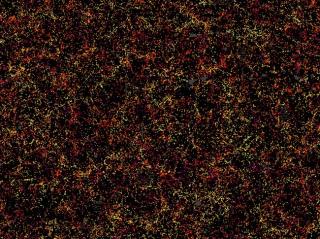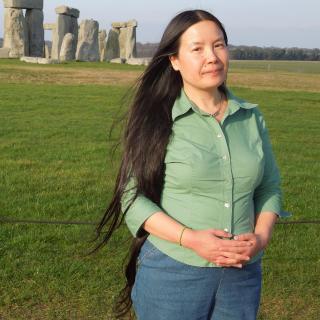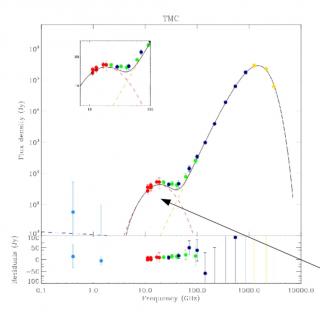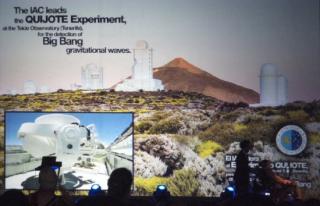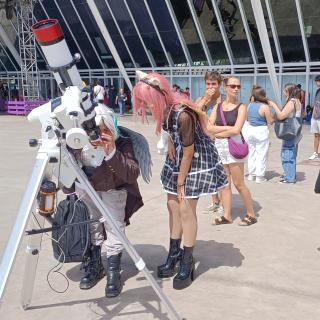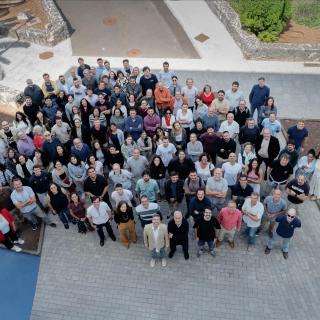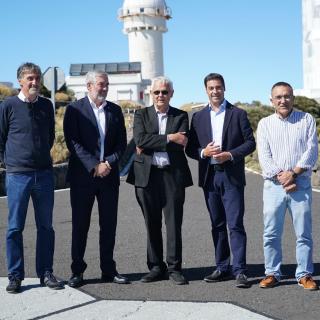Research by the Dark Energy Survey (DES) collaboration, in which the Instituto de Astrofísica de Canarias (IAC) participates, has confirmed the presence of a supervoid, an extremely large region with a lower-than-average density of matter, in the constellation Eridanus. Its study could provide new clues to understanding the nature of dark energy. The result is published today in Monthly Notices of the Royal Astronomical Society.
The possibility of mapping the largest structures in the Universe has always been an aspiration of astrophysics. After the meticulous charting of our cosmic backyard, recent discoveries have placed our galaxy into the supercluster Laniakea as part of the cosmic web of galaxies. However, less is known about our cosmic neighbourhood.
New research by the Dark Energy Survey (DES) collaboration and led by the Instituto de Astrofísica de Canarias (IAC) researcher András Kovács has confirmed that a large under-density of matter, a supervoid, lurks nearby in the Eridanus constellation.
This region is also the location of the so-called Cold Spot which is one of the large-scale anomalies of the Cosmic Microwave Background (CMB), a type of fossil radiation from the origins of the Universe. This anomaly corresponds to a structure, found over the southern ecliptic hemisphere sky, with a cooler-than-average temperature.
However, a cold region as large as the "cold spot" seems very unlikely according to the standard cosmological model. The DES team was led by the hypothesis that a supervoid might, at least in part, explain why this spot is significantly larger and colder than expected. In particular, cosmologists can use this giant notch as a unique laboratory to learn about the elusive dark energy.

Energetically, a supervoid is best imagined as a hill to climb from the perspective of the CMB photons in their journey towards our telescopes. On entry, they must invest energy to traverse an under-density. However, during their passage, these photons suffer from the effect of dark energy, which is responsible for cosmic expansion. Dark energy acts as a repulsive force, the opposite of gravity, so that it slows down the rate of formation of the largest cosmic structures and smooths them out.
Therefore, at the exit of a supervoid, the CMB photons, instead of recovering the same energy invested in going up the hill, lose part of it as the dark energy softens the descent. This net loss of energy is equivalent to a slight chill in the temperatures of CMB photons traversing supervoids. Thus, by studying this effect in detail, cosmologists can infer the properties of dark energy.
In the case of the Cold Spot, this hypothesis already has support from surveys of galaxies, but the DES data, that IAC researcher Aurelio Carnero Rosell also helped to construct, provides a key new observable. The reconstructed map of the underlying dark matter distribution provides statistically robust evidence for the lack of matter about 1.8 billion light-years across in Eridanus, corresponding to a dominant structure in our cosmic neighbourhood.
“Yet, the observed dimensions of the Eridanus supervoid cannot fully account for the Cold Spot's deep temperature depression if the standard model of dark energy is assumed in the calculations” explain Kovács. According to the astrophysicist, the full explanation would require an even stronger dark energy component to cause faster expansion and a less clumpy Universe at late times.
“A possible silver lining is that hundreds of other supervoids, detected in the more distant Universe, have also shown moderate evidence for stronger-than-expected cold spots, but the resolution of this long-standing debate in cosmology will most probably come from a next generation of cosmological surveys, which will map even larger volumes” concludes the researcher.
Article: A. Kovács et al. (the DES Collaboration): “The DES view of the Eridanus supervoid and the CMB Cold Spot”, MNRAS, December 2021. DOI: https://doi.org/10.1093/mnras/stab3309
Contact at the IAC:
András Kovács, akovacs [at] iac.es (akovacs[at]iac[dot]es)
Aurelio Carnero Rosell, aurelio.carnero [at] iac.es (aurelio[dot]carnero[at]iac[dot]es)

